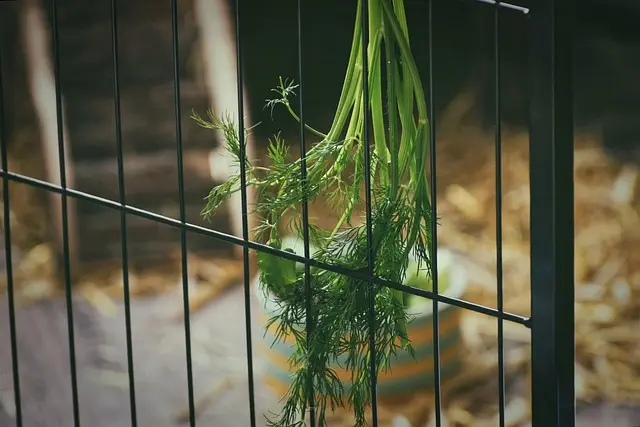In Louisiana, the legal status of kratom—a plant-derived substance with psychoactive effects—remains complex and subject to change. As of the latest updates, some municipalities have banned it while others have not regulated it, creating a patchwork of regulations that vary from parish to parish. The state legislature is considering measures to control its sale and distribution without enacting an outright ban. This situation calls for consumers and businesses to stay informed as laws evolve. When considering kratom's legality in Louisiana, it's important to note that Vietnamese kratom has gained attention due to its distinct alkaloid profile, which is influenced by the region's unique environmental conditions. Despite the ongoing regulatory scrutiny in places like the United States, where kratom is currently unregulated in Louisiana as of 2023, the cultivation practices in Vietnam have been refined to produce high-quality kratom leaves with consistent alkaloid levels. As the legal landscape of kratom continues to shift, understanding these agricultural aspects is crucial for policymakers to manage its use responsibly where it remains legal.
Exploring the complexities surrounding the herbal supplement kratom, our article delves into the intriguing landscape of its legality and cultivation. In particular, we examine the status of kratom in Louisiana, addressing the question, “Is kratom legal in Louisiana?” We also shed light on the unique properties and diverse uses of Vietnamese kratom leaves, a topic of growing interest. Furthermore, an in-depth look at the cultivation practices in Vietnam offers valuable insights for both enthusiasts and regulators alike, ensuring a well-rounded understanding of this botanical substance. Join us as we navigate through these aspects to provide a comprehensive overview of kratom’s place in Vietnamese horticulture and its implications for legal frameworks.
- Unraveling the Legal Status of Kratom in Louisiana: A Comprehensive Overview
- Exploring the Properties and Uses of Vietnamese Kratom Leaves
- The Cultivation and Harvesting of Kratom in Vietnam: Insights for Enthusiasts and Regulators
Unraveling the Legal Status of Kratom in Louisiana: A Comprehensive Overview

In recent years, the legal status of kratom, a tropical tree leaf derived from the mitragyna speciosa plant, has been a subject of intense debate and legislative action across the United States. Louisiana, in particular, has seen its own share of regulatory shifts regarding this botanical substance. As of the latest update, kratom remains in a grey area within Louisiana’s legal framework. While federal regulations view kratom as a dietary supplement, some local ordinances have been more restrictive. State legislature has attempted to regulate the sale and distribution of kratom, proposing measures that would control its accessibility while maintaining its legality. It is imperative for consumers and businesses alike to stay informed on the evolving legislation, as compliance with these regulations is crucial. Those interested in the current status of kratom should monitor local news sources or consult with legal experts, as state laws can change and may impose varying degrees of restriction or prohibition.
Navigating the legal landscape of kratom in Louisiana requires a clear understanding of both state and local regulations. The state has had a complex relationship with kratom, with some municipalities enacting bans while others have chosen not to regulate it. This patchwork of laws can lead to confusion, as the legality of kratom may differ from one parish to another. It is essential for residents and officials to be aware of the latest legal developments affecting kratom, given its growing popularity and the potential impact on public health. The legislative history of kratom in Louisiana underscores the importance of staying abreast of policy changes at both state and local levels, as these will shape how kratom is treated within the jurisdiction.
Exploring the Properties and Uses of Vietnamese Kratom Leaves

Vietnamese Kratom leaves have been the subject of growing interest due to their unique alkaloid profile and potential health benefits. Mitragyna speciosa, commonly known as kratom, is a tropical evergreen tree native to Southeast Asia, including Vietnam. The leaves of this tree contain a variety of alkaloids, the most notable being mitragynine and 7-hydroxymitragynine, which are believed to interact with the brain and body in various ways. Traditionally, kratom leaves have been chewed or brewed into teas by locals for energy and focus during laborious tasks, or for their sedative effects after a hard day’s work.
In recent years, the global market has seen an increase in the cultivation and trade of Vietnamese kratom due to its high-quality alkaloid content. The region’s specific climate conditions contribute to a unique set of properties in the leaves, making them sought after by consumers looking for a natural boost or relief from discomfort. As of the knowledge cutoff in 2023, the legal status of kratom varies across different states within the United States, with specific attention given to the question: “Is kratom legal in Louisiana?” In Louisiana, kratom is currently unregulated, meaning it is not explicitly illegal; however, this legal landscape is subject to change as regulatory bodies evaluate its safety and efficacy. Users of kratom products in Louisiana should stay informed about legislative updates, as the legal status of kratom can fluctuate based on new regulations or legislation. Whether for its potential wellness benefits or as a subject of scientific curiosity, Vietnamese kratom leaves continue to attract attention from around the world, each seeking to explore and understand their full scope of uses and properties.
The Cultivation and Harvesting of Kratom in Vietnam: Insights for Enthusiasts and Regulators

Kratom, a tropical evergreen tree native to Southeast Asia, has leaves that contain compounds of interest to both enthusiasts and scientists. The cultivation of kratom in Vietnam offers unique insights into its agricultural aspects, which are crucial for maintaining consistent quality and supply. Vietnamese farmers have honed their techniques over the years, growing the plant under specific conditions that optimize alkaloid content, particularly mitragynine and 7-hydroxymitragynine, which are the primary active ingredients. These conditions include a particular soil composition, appropriate humidity levels, and optimal sunlight exposure. The Vietnamese climate, with its distinct monsoon seasons, provides an environment where kratom can thrive, contributing to the high-quality leaves that are sought after by users worldwide.
The harvesting process in Vietnam is meticulous, ensuring that only the matured leaves with the highest concentration of active compounds are selected. The timing of the harvest is critical, as the alkaloid profiles change throughout the year. Regulators can benefit from understanding these cultivation practices to ensure that the trade of kratom is sustainable and legal frameworks are in place. In regions like Louisiana, where the legal status of kratom fluctuates, regulators need comprehensive data on cultivation to make informed decisions about its use and regulation. The insights gained from Vietnamese kratom cultivation can contribute to the development of guidelines that balance public health with economic interests, ensuring that kratom remains accessible for both therapeutic uses and responsible recreational use, where it is legal.
In conclusion, the exploration of Vietnam’s kratom leaves reveals a plant with complex implications, both within its native landscape and in global markets. The legal status of kratom in Louisiana, as detailed in “Unraveling the Legal Status of Kratom in Louisiana: A Comprehensive Overview,” remains nuanced, underscoring the need for ongoing dialogue between regulators and enthusiasts. The properties and uses of Vietnamese kratom leaves, covered in “Exploring the Properties and Uses of Vietnamese Kratom Leaves,” highlight the importance of understanding the botanical characteristics and potential benefits. Furthermore, insights into the cultivation and harvesting processes, as presented in “The Cultivation and Harvesting of Kratom in Vietnam: Insights for Enthusiasts and Regulators,” provide a foundation for sustainable practices and quality assurance. As kratom’s presence continues to evolve in both local and international arenas, it is clear that informed policies and responsible consumption are key to its future. For those interested in the regulatory landscape of kratom in Louisiana, this article serves as a comprehensive guide, reflecting the multifaceted nature of this intriguing plant.






